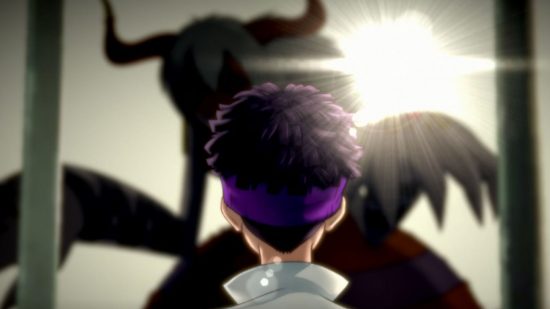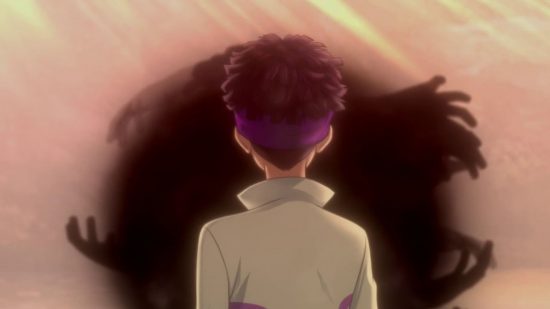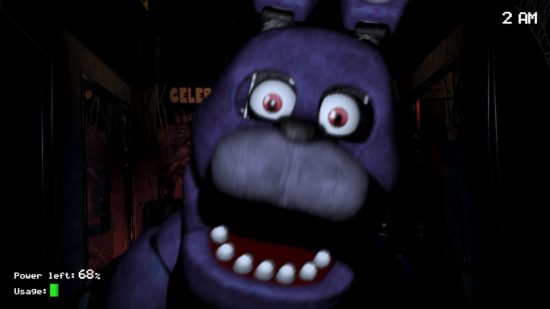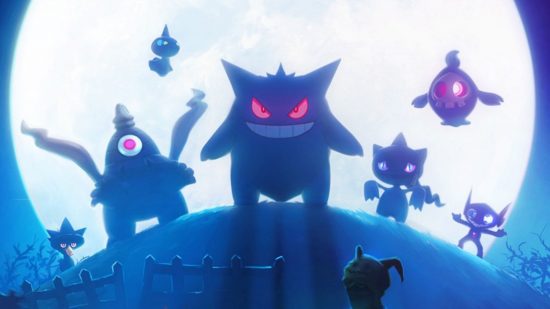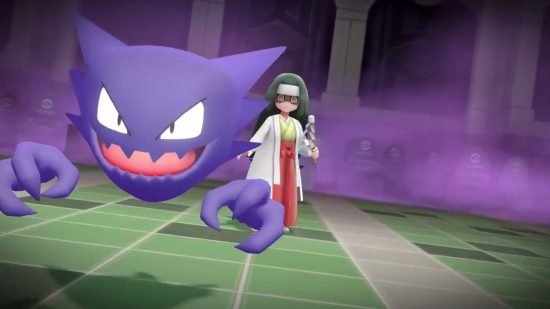This article contains spoilers for Digimon Survive
At the end of part three of Digimon Survive’s epic adventure, one of the kids who make up the adventuring party dies. He doesn’t faint. He doesn’t disappear into another dimension. He straight-up dies. And do you know what? I’m glad he does.
From this point onwards, Digimon Survive reveals its true self as a horror game – though, our clue really should have been in the name. Despite the title though, and despite all the clues that lead you like breadcrumbs towards your classmate’s demise, the concept of actual death in a series like Digimon seems entirely foreign. Then it happens, and suddenly the stakes raise to a staggering all-time high for the series, with the world of Digimon not quite as carefree as it seemed in the halcyon days of the anime debut.
The reason for Digimon’s tradition of avoiding death and the dead is pretty obvious, especially in the West, with a long history of marketing teams aiming Digimon products squarely at children. The same goes for other popular IPs of the early 2000s, with the Yu-Gi-Oh! anime substituting death for the mysteries of “the shadow realm”, while Pokémon has relied on the concept of fainting while turning a blind eye to the fact that the original Red and Blue had an actual graveyard in it. As it has been in the West for a while, the less kids know about the deep stuff, the better.
The thing is, it’s been clear for some time that there’s a desire from the older fans of these series to see more adult – no, not like that – experiences. Pokémon in particular is a good example, with Lavender Town creepypastas in circulation now for almost half of the history of the franchise, and plenty of ROM hacks and fan-made titles have been keen to lean into that abstract lore as it’s pretty evident it’s something the fans want.
Still, the Pokémon Company seem to want to steer clear of anything that might even slightly dent the firmly family-friendly approach. However, this eagerness to impress younger players over returning trainers is something that has not gone unnoticed in recent years, and while the Dexit furore was something I personally felt a little unnecessary, it doesn’t take away from the fact that the Pokémon Company often seem unwilling to give fans something they clearly want, or in simple terms, there’s no will to take a risk on the franchise.
As an example as to why I think the Pokémon Company should at least take note from Digimon Survive and toy with the idea of a horror game in a Pokémon world, as well as other franchises still scared to dip a toe in spooky waters, I’d point to the FNAF franchise and its wild success. I can hear what you’re saying now “but that’s an original horror game!” sure, you aren’t wrong, but it’s also clear that these are children’s characters warped to manufacture something much more frightening than your usual horror fare.
Freddy Fazbear and his pals have proven that characters made specifically for children, or those with a context that’s predominantly kid-orientated, are incredible contenders for horror games, and in such, so are a bunch of other IPs you might not have thought possible to turn into Freddy Krueger stand-ins. I don’t even necessarily have to prove this, I can point to the success of the Roblox title Piggy – a survival horror with a thinly veiled allusion to Peppa Pig as a villainous spectre who wants your blood – as a perfect example of this twisted phenomenon.
The problem you have as a Pokémon, Yu-Gi-Oh!, or even Dragon Ball fan is that these series don’t necessarily need to reinvent themselves in the way that Digimon consistently feels the need to. As monster hunting, card game, and super-powered space alien anime series, they’re at the respective top of their sub-genre food chains, forcing those struggling in the wake of the success of the giant IPs to try new bold things, something that hasn’t always paid off in Digimon’s case.
Let’s be honest though, as much as that reasoning makes sense, it is a bit boring. Especially when you consider the opportunities some of these IPs have. The early Yu-Gi-Oh! manga, before it was tempered into an anime form and then practically sterilised by 4kids Entertainment for a younger Western demographic, was an absolute death-a-palooza. You couldn’t turn a few pages without seeing a Japanese high-school student lose their life over a bad game of dice – it wasn’t just card games in those days – and it added a sense of tension entirely absent from the threat of the “shadow realm”.
Pokémon is an even stronger contender for a horror title. With countless ghost Pokémon to provide the spooks, a rich history of lore to lend ideas from, and series landmarks that ooze spooky vibes like a rotting pumpkin. I’m not saying that I think it’s a good idea for Pokémon to release a slasher game – I don’t – but even something like a Pokémon Snap meets Luigi’s Mansion concept with a Gengar-ridden ghost house might feel like a brave new world for a series that often only wants to dial back the tension, rather than heighten it (those who have played Pokémon Channel, the worlds most inoffensive video game, will know this all too well).
The reason this is so interesting to me is that the future of almost all forms of visual entertainment is quite clearly in the franchise, and if the MCU has shown us anything, it’s that diversifying a franchise through the use of genre rather than character makes things more interesting. The MCU learned this pretty early on, arriving at the realisation that you can only have so many superhero action moves before they get stale, so we started to get superhero mysteries, superhero comedies, and of course, the first flirtation with the idea of the superhero horror.
This comparison might seem off for Yu-Gi-Oh! and Dragon Ball, with neither quite as threatening a cultural force as the MCU, but with Pokémon, it’s a pertinent point to make. It’s a point that the Pokémon Company seem aware of too, with the first live-action Pokémon movie opting for the mystery genre in Detective Pikachu, which of course is an adaptation of the spin-off for Nintendo 3DS. So why has the series hardly even attempted anything truly scary?
The answer, I would assume, is Nintendo. It’s worth remembering that while Digimon is often assumed to be influenced primarily by Pokémon, the digital monsters actually came around as a result of the success of Tamagotchi, a children’s toy in which death is an inherent part of the experience. This means death is in the DNA of Digimon, and while those like me who only keep up with the series through games were unaware of it at the time, Digimon has a history with darker themes in its extended anime universe. Nintendo, Game Freak, and the wider Pokémon Company on the other hand have always been keen to avoid what we might call “heavy topics”. Don’t ask about Lavender Town. Don’t ask about Gary’s Raitcate. Don’t ask about what happens to the Pokémon you defeat and leave lifeless in the wild. Just catch ‘em all!
Clearly, this creative methodology hasn’t let them down so far in terms of sales, but in terms of the future of the Pokémon series, as well as other ageing series that are now looking at a core demographic that has grown with them, it’s worth wondering how far it can go until the original trainers move on to something that changes with them. This is the success of Digimon Survive, it knows its audience, albeit one that’s significantly smaller than Pokémon, and it’s willing to create something for those who are craving a new, bolder experience, rather than the sort of endless rehashing we see from other IPs.
In a post-Digimon Survive world, I can already tell that I might find my next franchise title a bit more bland than I would have done beforehand. Even ahead of my trip to Paldea for the Pokémon Scarlet and Violet release date, I’m already anticipating a pretty dull time in terms of story. It’s just that I’ve grown up is all, and while Digimon Survive is keen to come with me and offer the sort of scares I never thought imaginable from Agumon and the gang, it would be nice to see some other IPs branch out too. So scare me Pokémon, I dare you.
